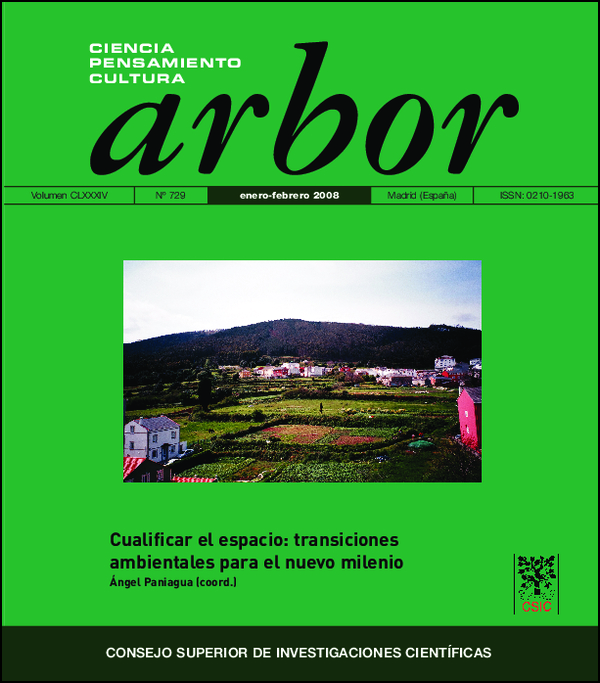Space, Culture, Nature and Place in the process of Spanish Inner Rural Reestructuring Areas
DOI:
https://doi.org/10.3989/arbor.2008.i729.167Keywords:
Culture, place, rural areas, qualitative analysisAbstract
This paper is a interpretation for the depopulated spaces of central Spain of the geographical theories of place. The approach is mainly constructive, with elements of Escobar point of view, Harvey’s theories and some Massey’s points of view. Consider two parallel levels in the conformation of place: an official level and an unofficial. The area of analysis is the river valley of Riaza in the province of Segovia (Spain).
Downloads
References
Cloke, P. y Jones, O. (2001): “Dwelling, place, and landscape: an orchard in Somerset”, Environment and Planning A, 33, pp. 649-666. doi:10.1068/a3383
Dirlik, A. (1998): Globalism and the politics of place. Development, 41-2, pp. 7-13.
Escobar, C. (2001): «Culture sits in places: reflections on globalism and subaltern strategies of localization», Political Geography, 20, pp. 139-174. doi:10.1016/S0962-6298(00)00064-0
Harvey, D. (1996): Justice, nature and the geography of difference, Oxford, Blackwell.
Johnston, R. J. (1991): A question of place. Exploring the practice of Human Geography, Oxford, Blackwell.
Massey, D. (2005): For space, New York, Sage, 222 pp.
Soja, E. (1996): Third Space, Oxford, Blackwell.
Downloads
Published
How to Cite
Issue
Section
License
Copyright (c) 2008 Consejo Superior de Investigaciones Científicas (CSIC)

This work is licensed under a Creative Commons Attribution 4.0 International License.
© CSIC. Manuscripts published in both the printed and online versions of this Journal are the property of Consejo Superior de Investigaciones Científicas, and quoting this source is a requirement for any partial or full reproduction.
All contents of this electronic edition, except where otherwise noted, are distributed under a “Creative Commons Attribution 4.0 International” (CC BY 4.0) License. You may read the basic information and the legal text of the license. The indication of the CC BY 4.0 License must be expressly stated in this way when necessary.
Self-archiving in repositories, personal webpages or similar, of any version other than the published by the Editor, is not allowed.














